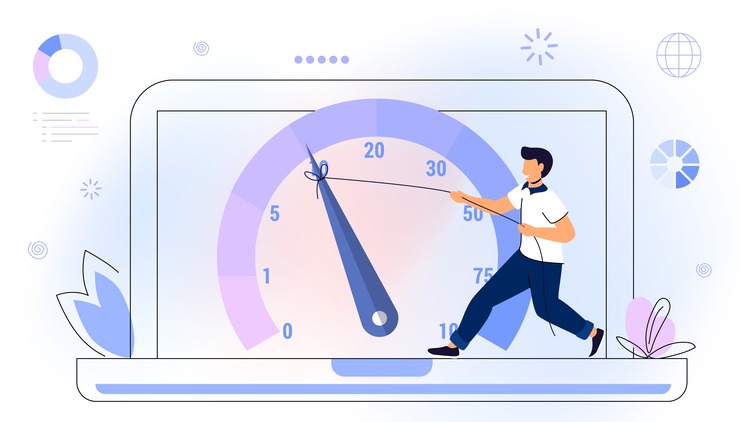January 8, 2024
Introduction:
In the ever-evolving landscape of SEO, staying ahead of the curve is crucial for maintaining and improving search rankings. One of the latest developments that website owners and digital marketers need to pay close attention to is Google’s Core Web Vitals and Page Experience updates. In this blog post, we’ll delve into the essentials of Core Web Vitals, their significance, and how optimizing for page experience can impact your website’s performance in search results.
Understanding Core Web Vitals:
1. Core Web Vitals are a set of specific factors that Google considers crucial in evaluating and measuring the user experience on a website. These metrics focus on aspects related to page loading performance, interactivity, and visual stability. The introduction of Core Web Vitals is part of Google’s broader initiative to prioritize user experience as a key ranking factor. As of my last knowledge update in January 2022, the three Core Web Vitals metrics are:
- Largest Contentful Paint (LCP):
-
- Definition: LCP measures the time it takes for the main content of a web page to load. It specifically looks at rendering the largest image or text block visible within the viewport.
- Target: To provide a good user experience, LCP should occur within 2.5 seconds of when the page first starts loading.
- First Input Delay (FID):
-
- Definition: FID assesses the interactivity of a web page by measuring the time it takes for the page to respond to a user’s first interaction, such as clicking a link or button.
- Target: A good user experience is indicated by an FID of less than 100 milliseconds.
- Cumulative Layout Shift (CLS):
-
- Definition: CLS evaluates the visual stability of a web page by measuring the sum total of all individual layout shift scores that occur during the entire lifespan of the page.
- Target: To provide a good user experience, pages should maintain a CLS of less than 0.1.
2. Significance of Core Web Vitals:
Google has emphasized user experience as a crucial factor in search rankings. Websites that provide a positive user experience are more likely to rank higher. Core Web Vitals serve as a standardized set of metrics to measure and improve the overall performance of a website.
Optimizing for Core Web Vitals:
1. Prioritize Page Speed:
- Optimize images and multimedia content.
- Utilize browser caching to reduce load times.
- Implement lazy loading for images and other non-essential resources.
2. Enhance Interactivity:
- Minimize JavaScript execution time.
- Optimize server response times.
- Prioritize critical rendering paths.
3. Improve Visual Stability:
- Specify image dimensions to prevent layout shifts.
- Use CSS Grid and Flexbox for more stable layouts.
- Delay the loading of non-essential elements until after the page has fully loaded.
The Impact of Core Web Vitals on Search Rankings:
1. Prioritizing User Experience:
- Google’s commitment to delivering quality search results has led to the inclusion of user experience as a crucial ranking factor.
- Core Web Vitals provide a standardized set of metrics focusing on user-centric web performance aspects.
2. Higher Rankings for Better User Experience:
- Websites that excel in Core Web Vitals metrics are more likely to be favoured by search algorithms.
- The positive correlation between a seamless user experience and higher search rankings underscores the importance of prioritizing Core Web Vitals.
3. Competing in the User-Centric Era:
- Core Web Vitals represent a shift towards a more user-centric approach in search engine rankings.
- Websites that align with user expectations and preferences, as measured by Core Web Vitals, are positioned for success in the competitive SEO landscape.
Tips for Optimizing Page Speed and User Experience:
1. Streamline Largest Contentful Paint (LCP):
- Optimize and compress images to reduce their file size.
- Leverage browser caching to store frequently accessed resources locally.
- Employ Content Delivery Networks (CDNs) for faster content delivery across global locations.
2. Enhance First Input Delay (FID):
- Minimize and defer JavaScript execution to avoid blocking main-thread tasks.
- Optimize code and reduce unnecessary script execution.
- Use asynchronous loading for non-essential scripts to improve page responsiveness.
3. Mitigate Cumulative Layout Shift (CLS):
- Set explicit dimensions for images and other media elements.
- Prioritize the loading of critical resources to prevent unexpected layout shifts.
- Utilize CSS features like Grid and Flexbox for stable and predictable layouts.
4. Prioritize Mobile Optimization:
- Ensure your website is mobile-responsive to cater to users across devices.
- Test and optimize for a variety of screen sizes and resolutions.
- Utilize mobile-friendly design principles to enhance the overall mobile user experience.
5. Secure with HTTPS:
- Implement HTTPS to encrypt data transmission, contributing to a secure browsing experience.
- Regularly audit and update security protocols to maintain a safe environment for users.
6. Minimize Intrusive Interstitials:
- Avoid pop-ups that hinder access to main content, ensuring a smoother user experience.
- Use interstitials sparingly and consider user-friendly alternatives.
Conclusion:
As Google continues to refine its algorithms for a more user-centric approach, webmasters and digital marketers must prioritize optimizing for Core Web Vitals. The impact on search rankings is undeniable, making investing in strategies that enhance page speed and user experience imperative. By incorporating the tips outlined above, you not only meet the criteria set by Core Web Vitals but also position your website for success in the competitive world of SEO. Stay ahead of the curve, prioritize user satisfaction, and watch your website climb the ranks in search engine results.
